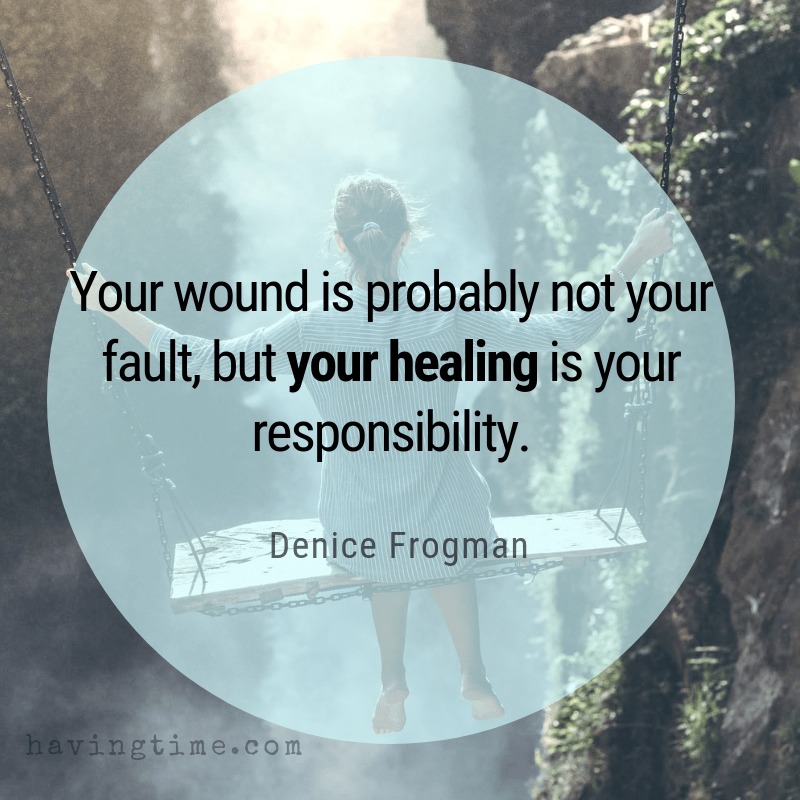Living your best life with chronic pain isn’t just about managing pain, but rather about finding all the ways to live a happy and fulfilled life in spite of your symptoms.

I was diagnosed with bipolar disorder in my mid-twenties, after years of struggling with mental health problems. Shortly thereafter, I began to seek help for widespread pain combined with other physical symptoms I had been experiencing. After months of tests and evaluation, I got a diagnosis of two chronic pain disorders: fibromyalgia and arthritis.
Fibromyalgia is categorized by widespread pain, fatigue, and a wide range of other symptoms. Arthritis causes pain, stiffness, and inflammation in the joints. Getting my diagnosis was a huge relief because I finally understood what was causing my symptoms; it also was terrifying because I thought that I would be stuck in that severe chronic pain forever.
The doctors offered painkillers and referred me to a specialist. When I saw a specialist, they were very nice and evaluated me. However, they suggested losing weight and staying positive and trying to keep active. I was left feeling hopeless, essentially being told that I would just need to ‘keep my chin up’ and ‘get on with it’. Nobody told me that there were effective treatments to manage chronic pain and even to help me overcome my symptoms.
How I Overcame Chronic Pain: From a Mobility Scooter to a 9 Mile Hike
During the time of my diagnosis, and afterward, for many months, I was constantly in pain.
Every movement I made caused searing pain throughout my body. I could barely walk across the room without feeling like I needed to lie down. I wasn’t functioning well and was struggling to get out of the house.
My husband and I decided to invest in a mobility scooter because I wasn’t able to walk or exercise anymore, and it was having a severe impact on my mental health.
I will always be thankful for my lovely scooter, and I was blessed to be able in a position to get her (yes she’s a girl and her name is Lux). I used her regularly and she gave me the freedom that I had been lacking for so long.
After a few months of this level of functioning, I began to do more research into fibromyalgia, arthritis, and chronic pain in general. The more I read, the more I learned that there are ways to manage your chronic pain!

I learned about the mind and body connection and educated myself about effective ways to overcome chronic pain. I read scientific studies, personal stories, medical journals, and watched countless videos about cognitive behavioral therapy (CBT) techniques, pain neuroscience education, pacing, and other treatments.
The fundamental thing that started to turn things around for me was understanding that even though I was in pain, the pain wasn’t actually going to damage me. It hurt, and it was horrendous, but chronic pain doesn’t equal damage.
The brain ‘learns’ to continue producing pain, even when there’s no need for it to do so. This is called central sensitization. That realization was liberating. I didn’t realize how frightened I had been. I learned that fear actually worsens pain, and leads to fear avoidance (meaning you avoid activities for fear of making your pain worse).
I started to implement strategies that I was learning online. I used CBT strategies to replace negative thoughts about my pain when I had them, with more empowering thoughts.
For example, when I found myself thinking “This pain will last forever”, I stopped myself and thought over what I had learned, then actively replaced that negative thought with something positive like, “This can and will improve” or “I can do this”. I also replaced negative coping strategies with more positive, helpful behaviors.

I started a healthier diet and worked on my sleep routine, which can be one of the hardest things for those with chronic pain. I tried to be more active during the day and started going to bed and getting up at the same time, whether I had slept or not. As I got into a more regular routine, I found that I was sleeping more restfully. It wasn’t perfect, but it was much improved.
I started to try exercising. My aim was to be able to go hiking with my dogs. I used what I had learned about pacing, which essentially means that you build up an activity very gradually, without pushing yourself too much, so you can build confidence and retrain your brain to not fear that activity. As you do so, your body gets fitter and you’re actively teaching your brain that it doesn’t need to produce pain messages in response to those actions.
I started to walk back and forth around my house. I gradually increased the number of steps I was doing. By gradually I mean over weeks, not days. The next stage was getting out to local parks and going walking. When I first started, I couldn’t walk across one of the fields in one of our favorite parks. The day I reached the other side of that field was momentous! I was so incredibly proud of myself!
From there I started to do short walks. Over the coming months, I built those walks up until I was doing 1 or 2 miles. Sometimes I would push myself too hard and my symptoms flared. That was tough but I used it to learn to read my body, figuring out when I should rest and when I was able to push myself a little further.

My journey continued until I was walking an average of 2 or 3 miles every time we went out hiking. It was a fantastic feeling. Then someone in my family who meant the absolute world to me passed away. A year on from their death, we decided to do a sponsored walk for charity in their memory, to one of the places we used to go as kids.
We thought the walk we had planned was around 3 miles. I put on my step counter which tracks the miles, and off we went. It was a beautiful day, both literally and emotionally. I was sore afterwards, but not flaring, and I enjoyed the walk.
When we had finished the walk, we checked the step counter, and found that we had walked 5 whole miles! That was the furthest I had ever managed, and I was thrilled. I felt like my loved one had blessed me with the confidence to keep going.
After that my confidence kept growing, as did my hiking ability. Last year, I completed a 9-mile hike for a local charity. It was amazing! Now we go hiking at least 3 or 4 times a week, having amazing adventures with our dogs.
It’s still an ongoing journey. There are still hard times, and it’s not a quick fix. Sometimes I push myself too far, but I am constantly learning. I still experience pain and other symptoms, but they are significantly reduced to a point where I can function and thrive!
I am winning my battle and I am determined to keep fighting!
photo source

